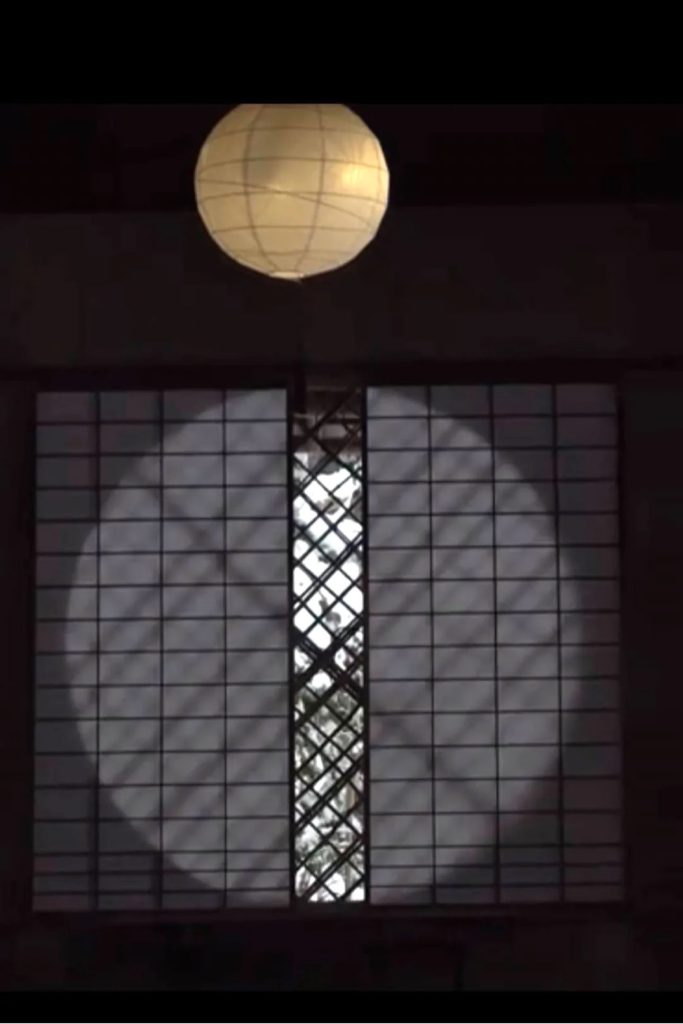
Snow is falling deeply at Gio-ji Temple in Sagano, Kyoto. Gio-ji Temple is known as a tragic nunnery where Gio, who was favored by Taira no Kiyomori, was driven out of the capital due to Kiyomori’s change of heart, and entered the priesthood with his mother and sister. It is located in the precincts of the old Ojoin Temple, which is said to have been built by Ryouchin, a disciple of Honen Shonin. It seems to have existed until the end of the Edo period, and was then in ruins, but in 1895, the prefectural governor Kunimichi Kitagaki, who learned of the tragic love of Shirabyoshi Gio and others, donated his tea room that was in his villa in Saga in memory of Gio. And Tessai Tomioka and others built the current Gio-ji Temple with this as the main hall. There is a large round window in the antechamber of the thatched hut called Yoshino-mado. It is also called the “Rainbow Window” because the sunlight that shines through the green leaves of the precincts reflects the colorful colors on the shoji screens. Now, many shadows of Botanyuki(large snowflakes) is falling silently on the round window.
京都嵯峨野にある祇王寺に雪が深々と降っています。祇王寺は、平清盛の寵愛を受けた白拍子の祇王が清盛の心変わりにより都を追われるように去り、母と妹とともに出家、入寺した悲恋の尼寺として知られています。昔の往生院の境内にあり、往生院は法然上人の門弟良鎮によって創建されたと伝わっています。江戸末期まで存在していたらしく、その後荒廃していましたが、明治28年、白拍子祇王らの悲恋を知った当時の府知事北垣國道が、祇王を偲び嵯峨の別荘にあった茶室を寄進し、これを本堂にして冨岡鉄斎らにより現在の祇王寺がつくられました。草庵の控えの間には大きな丸窓があり、吉野窓と言います。境内の緑葉を通って差し込む日差しが障子に色とりどりの色彩を映し出すことから「虹の窓」とも呼ばれています。今はその丸窓に牡丹雪の影がいくつも音もなく落ちて行きます。
